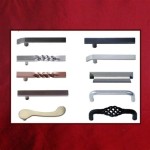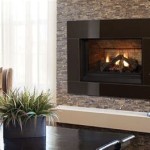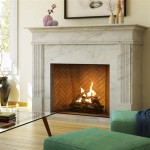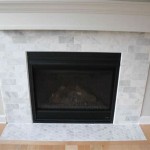```html
Ventless Gas Fireplace Corner Units: A Comprehensive Guide
Ventless gas fireplace corner units offer a compelling solution for individuals seeking the ambiance and warmth of a fireplace without the complexities and costs associated with traditional vented systems. These units are designed to fit seamlessly into corner spaces, optimizing room layout and providing a visually appealing focal point. This article will explore the key features, advantages, considerations, and installation aspects of ventless gas fireplace corner units.
Understanding Ventless Technology
Ventless, or vent-free, gas fireplaces operate by burning natural gas or propane very efficiently, producing minimal byproducts such as carbon monoxide. These units are equipped with oxygen depletion sensors (ODS), a critical safety feature. The ODS constantly monitors the oxygen levels in the room. If the oxygen level drops to a predetermined level, indicating a potential buildup of incomplete combustion products, the ODS will automatically shut off the gas supply to the fireplace, preventing the emission of harmful gases into the living space.
The efficiency of ventless gas fireplaces is a significant advantage. Because they do not require a chimney or vent, all the heat generated by the unit is released directly into the room, resulting in heating efficiencies often exceeding 99%. This contrasts sharply with traditional vented fireplaces, where a significant portion of the heat escapes through the chimney.
It is essential to understand that while ventless fireplaces are designed to be safe, proper installation and adherence to manufacturer’s guidelines are paramount. Adequate room ventilation is crucial, even with the ODS safety feature. Local building codes should always be consulted and followed to ensure safe and compliant operation.
Advantages of Corner Unit Design
Corner fireplaces offer several advantages over wall-mounted or freestanding models. Their placement in a corner maximizes space utilization, particularly in smaller rooms or spaces with unconventional layouts. By occupying an otherwise often-unused area, a corner fireplace can create a more open and flowing feel in the room.
The visual impact of a corner fireplace can be substantial. It naturally draws the eye, creating a focal point that enhances the overall aesthetic of the room. The angled orientation allows for a wider viewing angle of the flames, making the fireplace visible from multiple seating areas within the room. This can be particularly beneficial in open-concept living spaces.
From an installation perspective, corner units can sometimes simplify the process. The corner often provides structural support, and the design can more easily conceal gas lines and electrical connections. However, proper planning and professional installation are still recommended to ensure safety and optimal performance.
Key Considerations Before Purchasing
Several factors must be carefully considered before purchasing a ventless gas fireplace corner unit. First, the size of the room is critical. Ventless fireplaces are rated by BTU (British Thermal Units), which indicates the amount of heat they produce per hour. A unit that is too large for the room can result in overheating and discomfort, while one that is too small may not provide adequate warmth.
Local building codes and regulations must be thoroughly researched and followed. Some jurisdictions may restrict or prohibit the use of ventless gas fireplaces due to concerns about indoor air quality and carbon monoxide emissions. It is the responsibility of the homeowner to ensure compliance with all applicable codes before installation.
The design and style of the fireplace should complement the existing décor of the room. Ventless gas fireplace corner units are available in a wide range of styles, from traditional to contemporary. Factors such as the mantel material, firebox design, and burner style should be carefully considered to create a cohesive and visually appealing aesthetic.
The long-term cost of operation should also be factored into the decision-making process. While ventless fireplaces are highly efficient, the cost of natural gas or propane can vary depending on location and market conditions. A thorough cost analysis should be conducted to determine the overall affordability of the unit.
Finally, the reputation and warranty of the manufacturer are important considerations. Choosing a reputable brand with a solid track record of safety and reliability can provide peace of mind. A comprehensive warranty can protect against potential defects or malfunctions.
Installation Requirements and Safety Precautions
The installation of a ventless gas fireplace corner unit should ideally be performed by a qualified and licensed professional. This will ensure that the unit is installed correctly and safely, and that it complies with all applicable building codes and regulations.
Proper gas line connections are essential. The gas line must be properly sized and installed according to local codes. Leak testing is crucial to ensure that there are no gas leaks. A carbon monoxide detector should be installed in the room where the fireplace is located, providing an additional layer of safety.
Adequate ventilation is paramount, even with the ODS safety feature. The room should have a source of fresh air, such as a window or door that can be opened. It is important to avoid blocking or obstructing any ventilation openings.
The fireplace should be installed on a non-combustible surface, such as tile, stone, or concrete. The surrounding area should be kept clear of combustible materials, such as curtains, furniture, and paper. A safe distance should be maintained between the fireplace and any flammable objects.
Regular maintenance is essential to ensure the safe and efficient operation of the unit. The burner should be cleaned periodically to remove any debris or soot. The ODS sensor should be tested regularly to ensure that it is functioning properly. The gas line should be inspected annually by a qualified technician.
It is imperative to read and understand the manufacturer’s instructions before operating the fireplace. The instructions will provide detailed information on the safe operation, maintenance, and troubleshooting of the unit.
Types of Ventless Gas Fireplace Corner Units
Ventless gas fireplace corner units come in various styles and configurations to suit different aesthetic preferences and spatial requirements. Some common types include:
Traditional Corner Fireplaces: These units often feature a classic design with a decorative mantel and firebox. They may incorporate features such as simulated brick or stone surrounds, giving them the look and feel of a traditional masonry fireplace. These are well-suited for homes with a more formal or traditional décor.
Contemporary Corner Fireplaces: Contemporary units tend to have a sleek and minimalist design, often with clean lines and a focus on modern materials such as glass and metal. They may feature linear burners or other innovative flame patterns, creating a visually striking focal point. These are ideal for modern or contemporary homes.
Electric Insert Conversions: While not technically ventless *gas* fireplaces, electric fireplace inserts designed for corner placement offer a similar aesthetic without the combustion concerns. These units use electricity to simulate flames and produce heat. They are often easier to install and operate than gas units, but they may not provide the same level of realism or heat output.
Direct Vent Gas Fireplaces (Misconception): It's important to clarify that direct vent gas fireplaces, while also gas-fueled, are *not* ventless. They require a vent to the outside for both intake air and exhaust. While direct vent corner units exist, they are distinct from ventless models.
Selecting the Right Fuel: Natural Gas vs. Propane
Ventless gas fireplaces typically operate on either natural gas or propane. The choice between these two fuels depends on several factors, including availability, cost, and personal preference.
Natural Gas: Natural gas is typically the more economical option, particularly in areas where it is readily available. It is supplied through a pipeline, eliminating the need for fuel storage. However, natural gas may not be available in all locations, particularly in rural areas.
Propane: Propane is a more versatile fuel, as it can be stored in tanks and transported to remote locations. However, propane typically costs more than natural gas. It also requires the installation of a propane tank, which can take up space and require regular refills. Proper management of a propane tank is critical for safety.
The conversion between natural gas and propane typically requires a conversion kit and adjustments to the fireplace. It is essential to consult the manufacturer’s instructions or a qualified technician before attempting to convert the unit from one fuel to another.
The decision between natural gas and propane should be based on a careful evaluation of the factors outlined above. Homeowners should consider the availability and cost of each fuel, as well as their personal preferences and lifestyle.
```
Hearthsense Liquid Propane Ventless Gas Tower Corner Fireplace 20 000 Btu Cherry Finish 170089 The Home Depot

Corner Ventless Gas Fireplace Visualhunt

Corner Ventless Gas Fireplace Visualhunt

42 Standard Corner Cabinet Mantel Built In Base Empire

Corner Ventless Gas Fireplace Visualhunt
Corner Two Sided Gas Fireplace Heat Glo

Hearthsense Liquid Propane Ventless Gas Tower Corner Fireplace 20 000 Btu Cherry Finish 170089 The Home Depot

Bay Front Vent Free Fireplace A Stunning Addition To Your Home

Corner Ventless Gas Fireplace Visualhunt

Allen Roth 49 5 In Walnut Ventless Natural Or Liquid Propane Gas Fireplace The Fireplaces Department At Com
Related Posts








